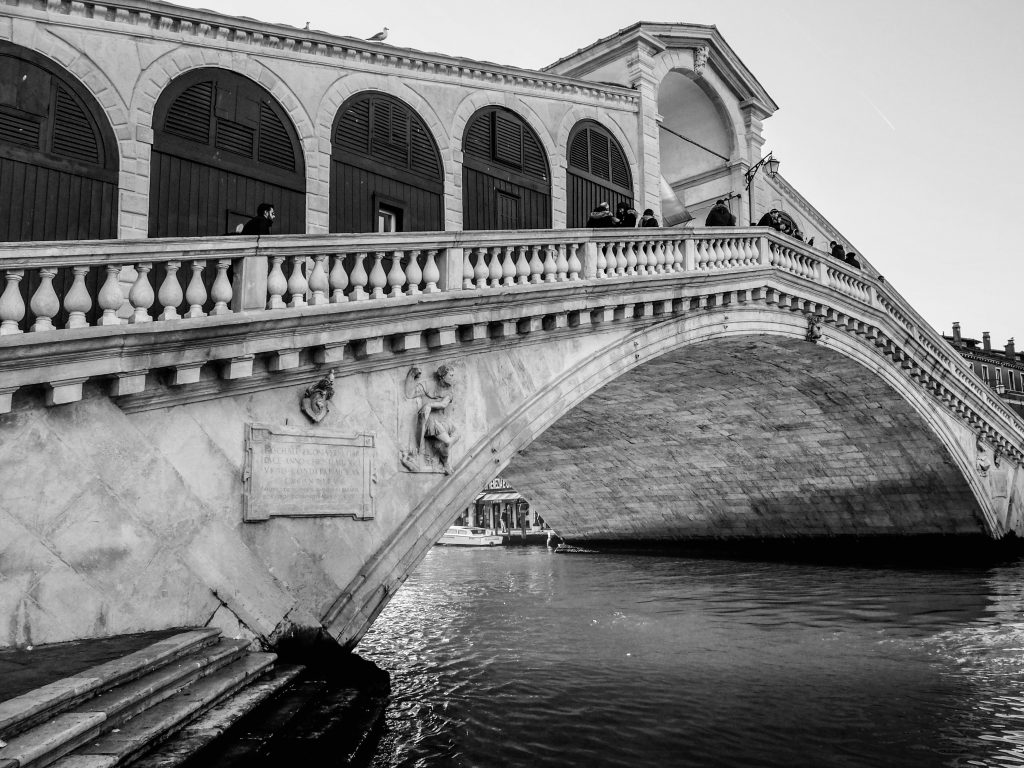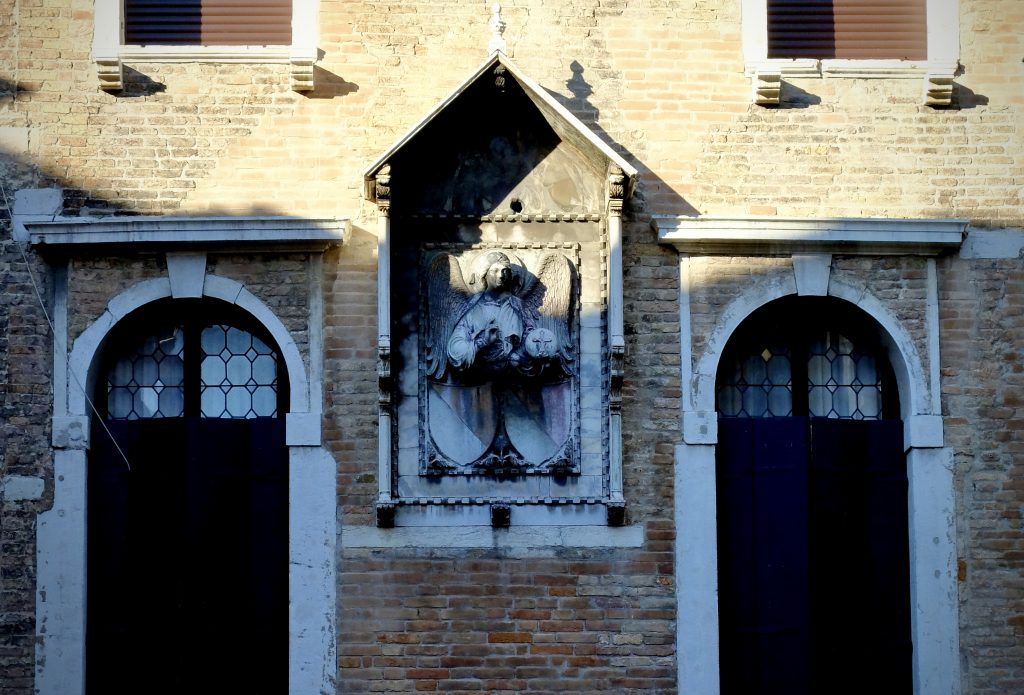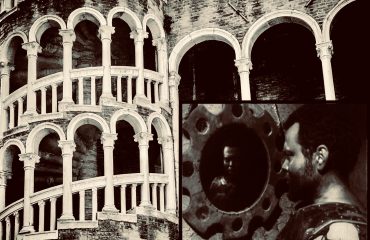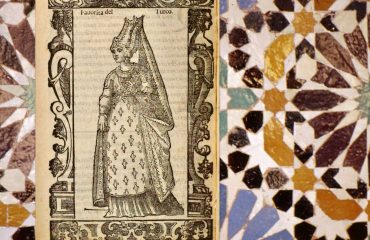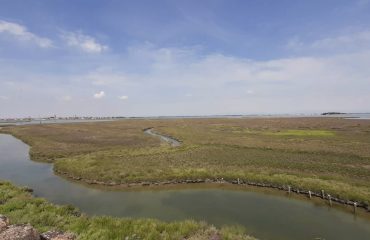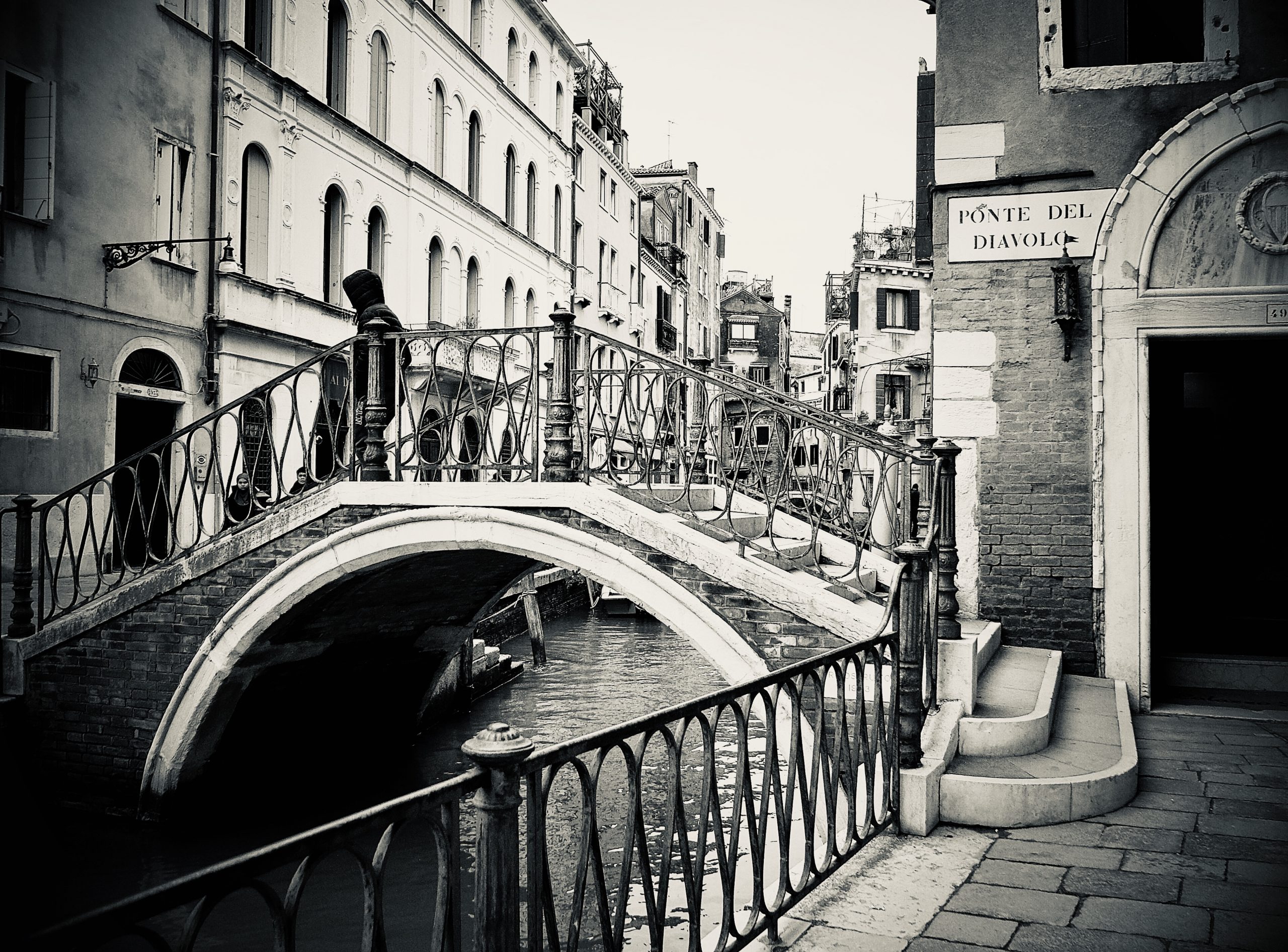
If we believe the legend, known with slight variations all over Europe, the devil must have been a very active builder of bridges. In Venice, a city of water where bridges of different forms and dimensions are over 400, a demonic touch can’t be absent, of course.
In the Castello area for example, “Devil’s bridge” and “Devil’s street”, intersect with a superstitious twist “Priests’ street”.
Near the Arsenale “Hell” and “Purgatory” are happily close to each other: two little bridges that span an equally small canal providing access to a building. The Arsenale was a formidable complex of shipyards, heart of the naval power of Venice. The poet Dante Alighieri, who visited it in the early XIV century, mentions the Arsenale in his Inferno, sketching a powerful vision of boiling tar…
But the most famous diabolical bridge can be found on the island of Torcello, in the northern lagoon. The bridge was built in the XVI century, without handrails just like all venetian bridges originally used to be. There are two different legends behind the name of this “Devil’s bridge”. The first one tells about the obvious intervention of the devil himself in the making of the bridge, while in the latter, more romantic, the archfiend has to face a passionate pair of lovers. At the end, he’s always tricked and beaten.
But may be not exactly always…the challenging building of another famous bridge gave birth to a quite darker legend.
The Rialto bridge spans the Grand Canal linking the district of St. Mark with the main Market. It’s been rebuilt a few times across the centuries and the present version was started in 1588, a single span supported onto the unstable soil by a forest of wooden pilings driven into it. It’s an imposing structure of stone: not surprisingly the devil had a hand in it and then succeded in taking the souls of wife and child of the architect. It’s only a legend, luckily, but it bears traces of very ancient customs, when a real sacrificial victim was required at the foundation of a bridge.
The devil gets involved even with the “Angel’s bridge”. Defeated by a holy man while he was trying to win a soul, the devil shot out from the wall of the house leaving a hole behind. A hole that is still visible, but prudently watched over by a beautiful angel, a XIV century relief that gave its name to the facing bridge.
Anyway, to oppose the evil influence, there is in Venice an appropriate number of bridges and calli (streets) dedicated to Christ, the Virgin Mary and many Saints. And also -happy end- a calle called “Heaven”.
Emanuela







